Abstract
Clone 115 of Spirodela intermedia W. Koch grown in Hutner's medium with sucrose produces the glycoflavones vitexin and orientin in darkness or in light of various wavelengths. The anthocyanin cyanidin-3-monoglucoside was present only after prolonged illumination of the plants with white or blue light. No cyanidin-glucoside was formed under constant red light. The substitution of red, blue, or far-red light for the last 24 hours of culture under constant white light reduced each flavonoid over those maintained in white light or given 24 hours of darkness. Reducing the light intensity from 900 to 400 ft-c of constant cool-white fluorescent light had no appreciable influence on vitexin (4′-hydroxyl) but markedly reduced orientin and cyanidin-glucoside (both 3′4′-hydroxyl). Substituting alternate 12-hour periods of light and darkness for continuous light reduced the glycoflavones approximately 50% while cyanidin-glucoside was reduced about 85%. Most responses to red, blue, or far-red light are consistent with a phytochrome-controlled promotion of vitexin synthesis.
The evidence suggests that in S. intermedia: A) Environmental conditions which elicit cyanidin-glucoside and glycoflavone synthesis are different since a prolonged illumination with white light is required for the former but not the latter. B) The availability of a 3′4′-hydroxyl precursor for orientin and anthocyanin probably limits their synthesis in low intensity light. Since vitexin is essentially unaltered under these conditions this also suggests that acetate or malonate units for the A-ring and the deamination products of aromatic amino acids for the B-ring and carbons of the C-ring are not limiting factors. C) Light controls the biosynthesis of flavonols in the same manner as glycoflavones; under all experimental conditions the synthesis of kaempferol paralleled vitexin while quercetin responded in the same manner as crientin.
Full text
PDF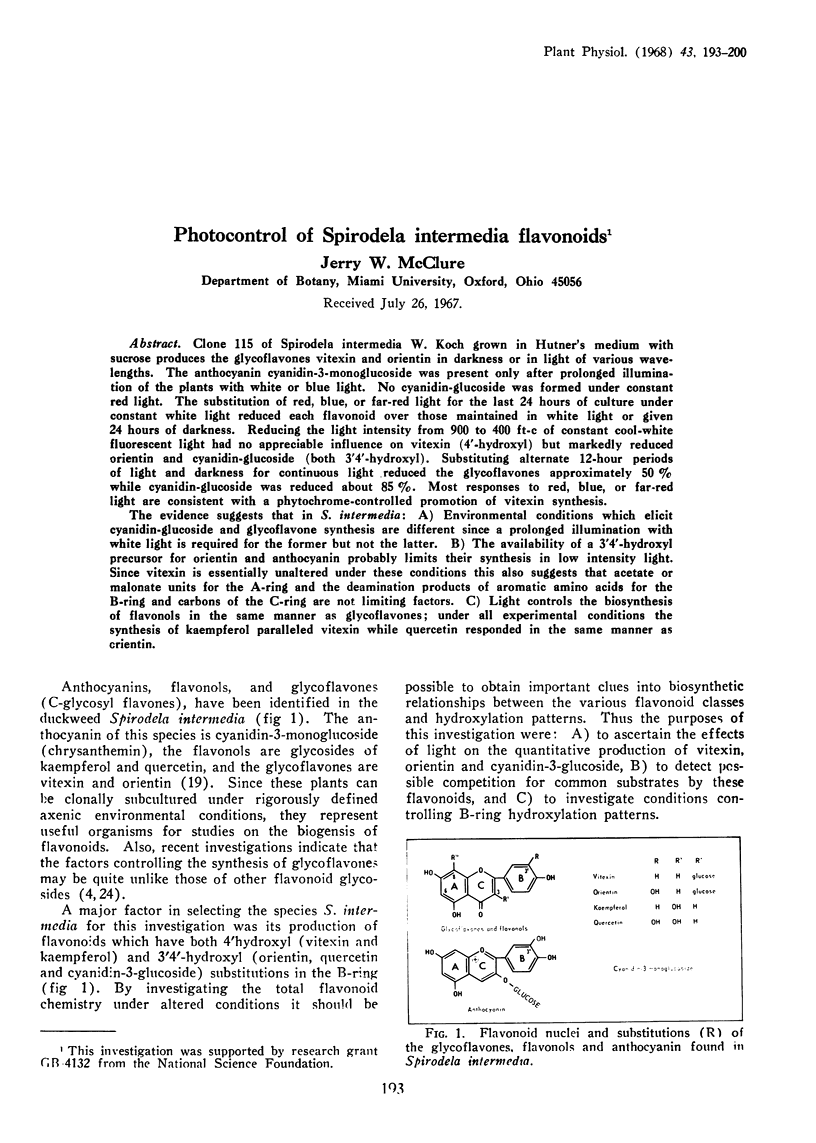
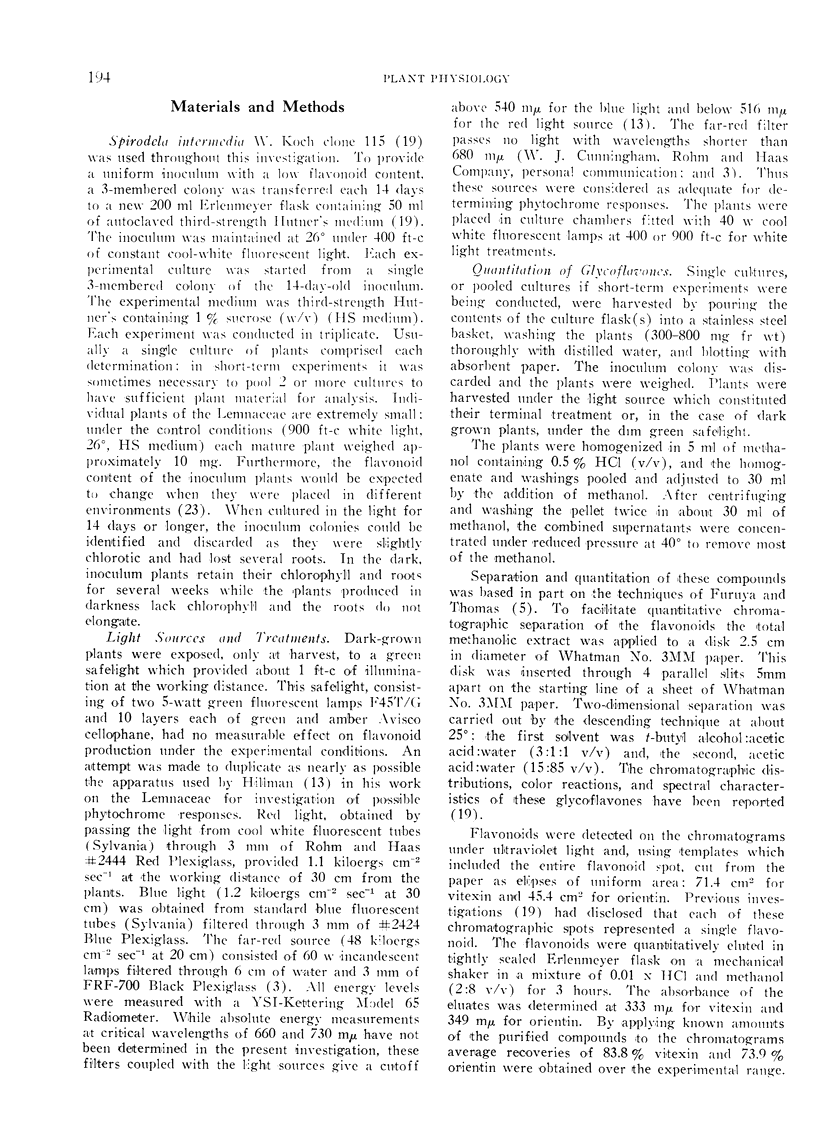

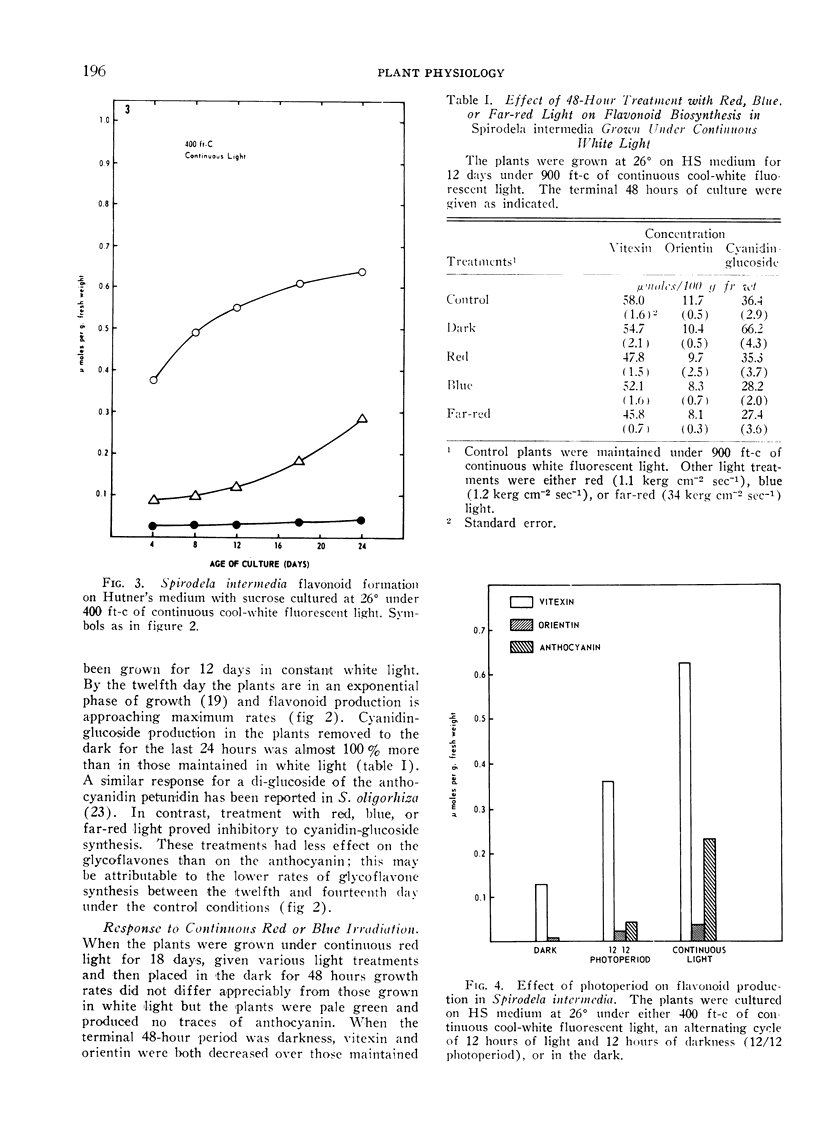
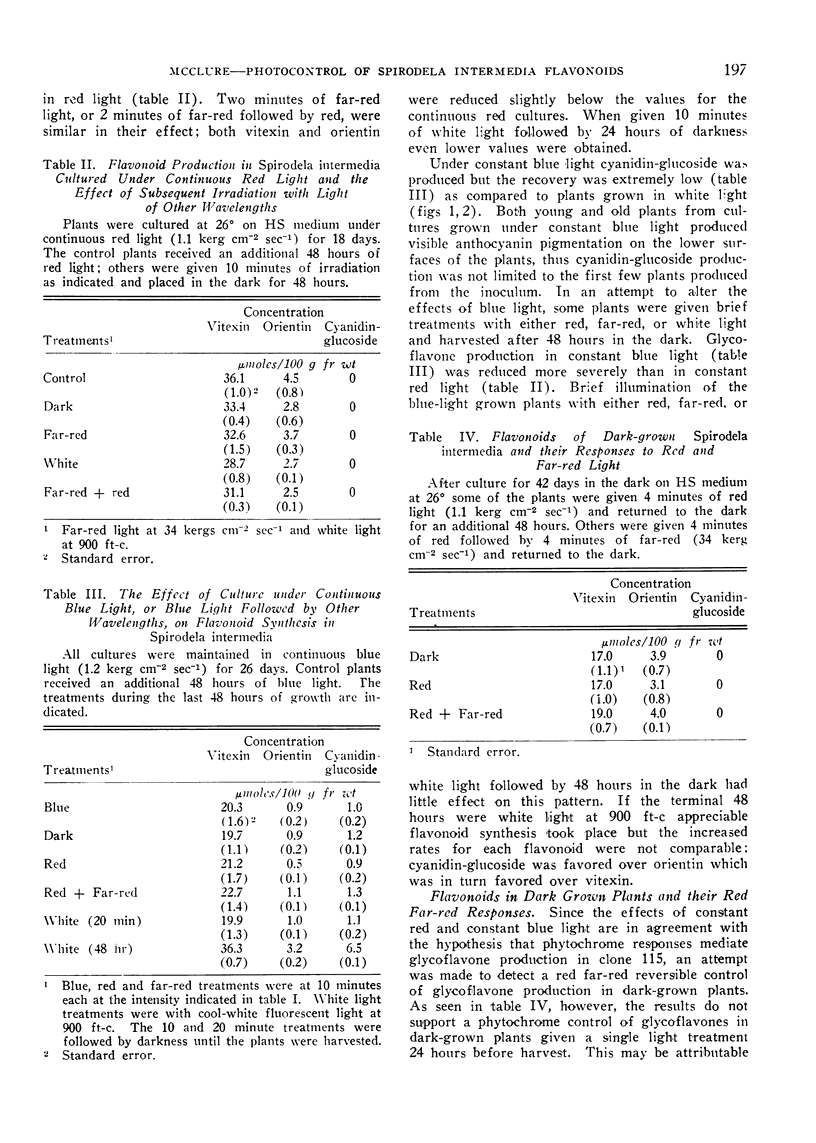

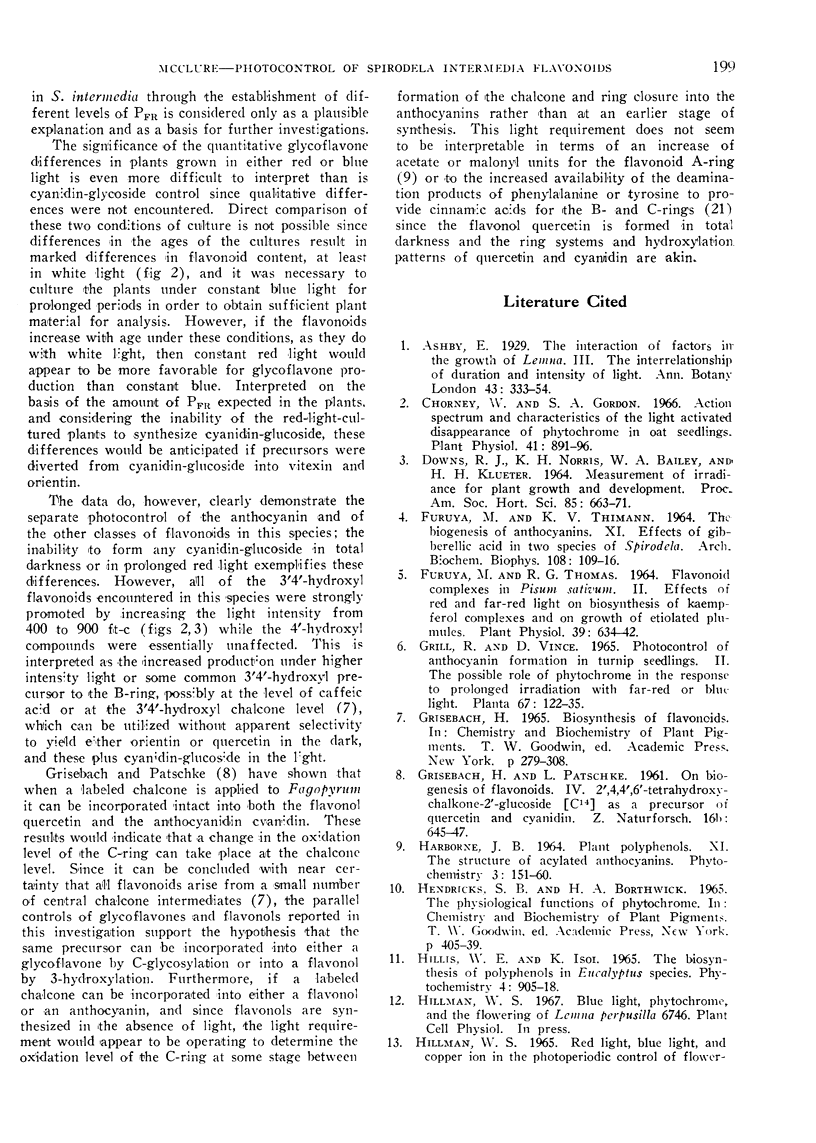

Selected References
These references are in PubMed. This may not be the complete list of references from this article.
- Chorney W., Gordon S. A. Action spectrum and characteristics of the light activated disappearance of phytochrome in oat seedlings. Plant Physiol. 1966 May;41(5):891–896. doi: 10.1104/pp.41.5.891. [DOI] [PMC free article] [PubMed] [Google Scholar]
- FURUYA M., THIMANN K. V. THE BIOGENESIS OF ANTHOCYANINS. XI. EFFECTS OF GIBBERELLIC ACID IN TWO SPECIES OF SPIRODELA. Arch Biochem Biophys. 1964 Oct;108:109–116. doi: 10.1016/0003-9861(64)90361-3. [DOI] [PubMed] [Google Scholar]
- Furuya M., Thomas R. G. Flavonoid Complexes in Pisum sativum. II. Effects of Red and Far-Red Light on Biosynthesis of Kaempferol Complexes and on Growth in Etiolated Plumules. Plant Physiol. 1964 Jul;39(4):634–642. doi: 10.1104/pp.39.4.634. [DOI] [PMC free article] [PubMed] [Google Scholar]
- McClure J. W., Alston R. E. A chemotaxonomic study of Lemnaceae. Am J Bot. 1966 Oct;53(9):849–860. [PubMed] [Google Scholar]
- Stafford H. A. Flavonoids and related phenolic compounds produced in the first internode of Sorghum vulgare Pers. in darkness and in light. Plant Physiol. 1965 Jan;40(1):130–138. doi: 10.1104/pp.40.1.130. [DOI] [PMC free article] [PubMed] [Google Scholar]


